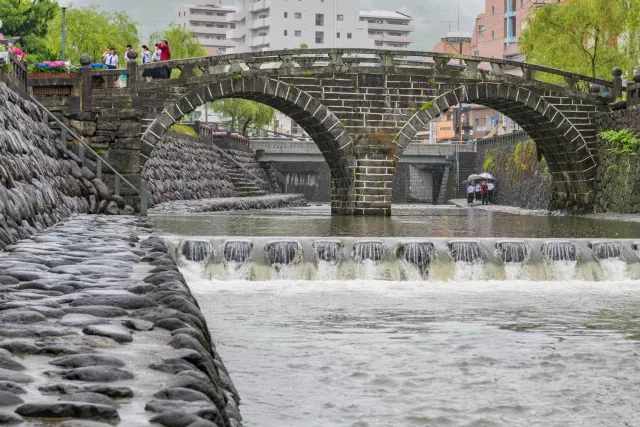Originally an insignificant fishing village, Nagasaki experienced a sustained boom with the arrival of the Portuguese in the mid-16th century. This is considered to be the first contact between Europeans and Japanese ever. The missionary F. Xavier founded the basis for the Jesuit missionary work there and soon Christian churches and nursing homes were established. This went hand-in-hand with the growing prosperity of the small town, which did not go unnoticed by the mighty of Japan, and thus not without consequences for the peaceful community of Nagasaki.
Toyotomi Hideyoshi, a central figure in the regional princes there, was disturbed by the growing influence of Christian missionaries. In 1597 Hideyoshi had 26 Franciscan and Jesuit missionaries and Japanese converts to Christianity between the ages of twelve and 64 led from central Japan through the western parts of the country to Nagasaki and crucified there as a deterrent. In 1614 Christianity was finally banned. All missionaries were deported, as were those regional princes who did not want to renounce Christianity. A brutal persecution ensued, with thousands killed and tortured in Nagasaki and other parts of Japan.
The modern city of Nagasaki emerged in 1878 through many stages of development. It quickly gained economic importance and served as a large shipyard for the Japanese Navy until World War II. In addition to its favorable valley location, this made it a target for the second atomic bomb attack by the Americans in World War II.
Today the city is known as a memorial for the devastating nuclear attack by the Americans, but also for buildings such as the double arch bridge (眼鏡橋, megane-bashi), which, together with its reflection in the water, evokes the image of glasses (megane) or Glover Park with its Victorian buildings.
The Basilica of the Twenty-Six Holy Martyrs of Japan, or Ōura Church (大浦天主堂, Ōura Tenshudō), is a UNESCO World Heritage Site and was built in 1864 to honor the crucified Christians of Japan.






















